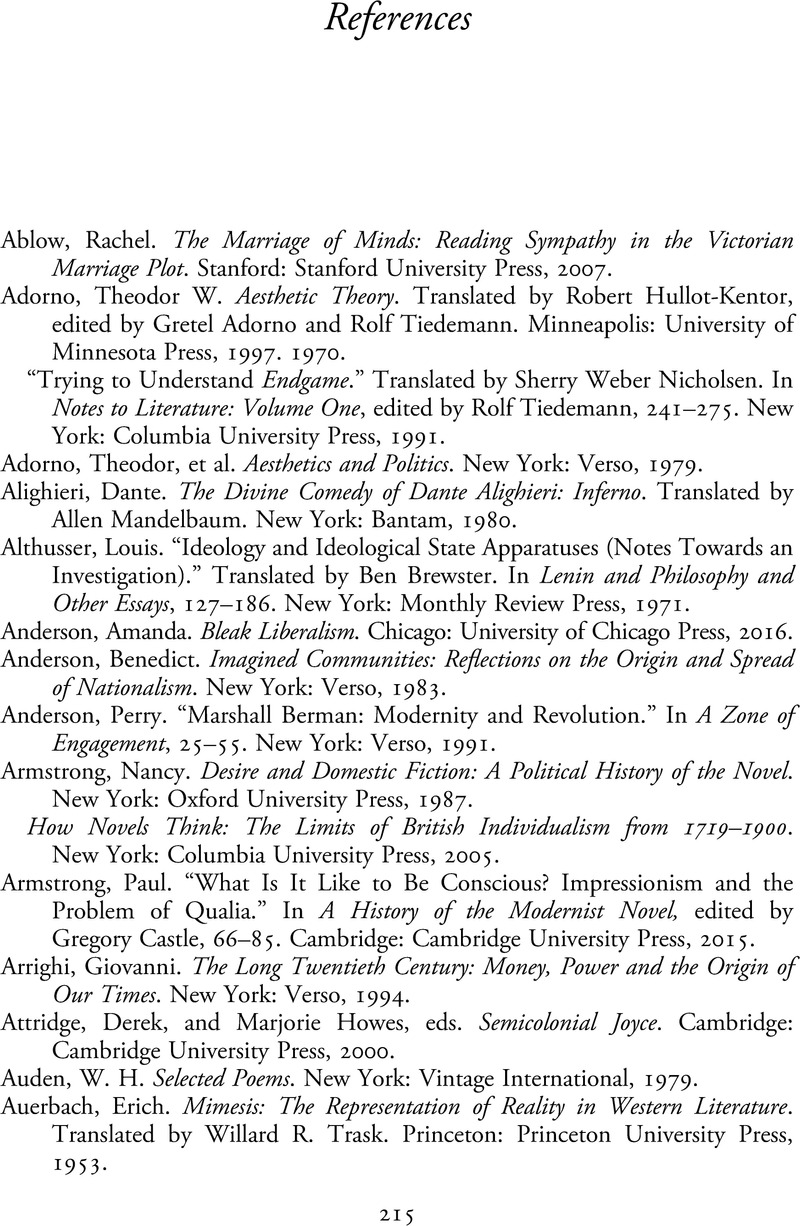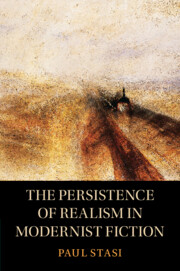Book contents
- The Persistence of Realism in Modernist Fiction
- The Persistence of Realism in Modernist Fiction
- Copyright page
- Contents
- Acknowledgments
- Introduction
- Chapter 1 Fables of Autonomy in Late James
- Chapter 2 “She Will Drown Me with Her”
- Chapter 3 “Innumerable Slight Changes”
- Chapter 4 “I Was Always Sentimental”
- Chapter 5 “He Forgot His History”
- Conclusion
- References
- Index
- References
References
Published online by Cambridge University Press: 08 November 2022
- The Persistence of Realism in Modernist Fiction
- The Persistence of Realism in Modernist Fiction
- Copyright page
- Contents
- Acknowledgments
- Introduction
- Chapter 1 Fables of Autonomy in Late James
- Chapter 2 “She Will Drown Me with Her”
- Chapter 3 “Innumerable Slight Changes”
- Chapter 4 “I Was Always Sentimental”
- Chapter 5 “He Forgot His History”
- Conclusion
- References
- Index
- References
Summary

- Type
- Chapter
- Information
- The Persistence of Realism in Modernist Fiction , pp. 215 - 230Publisher: Cambridge University PressPrint publication year: 2022



